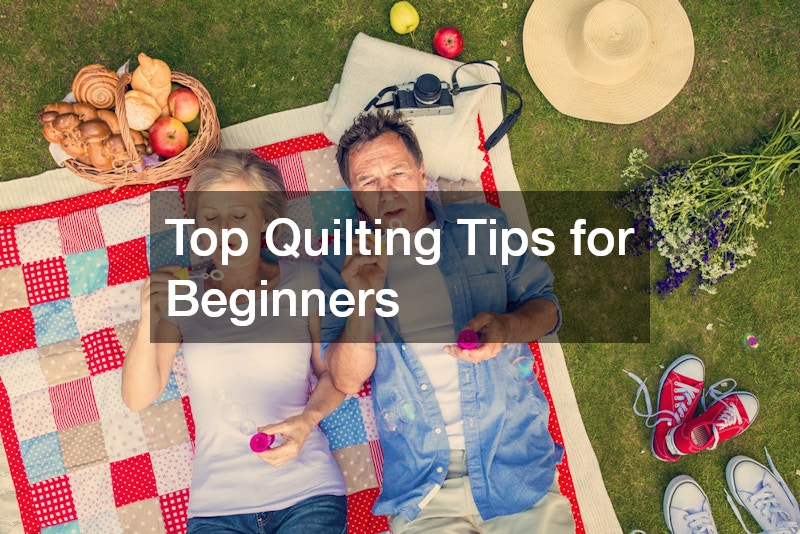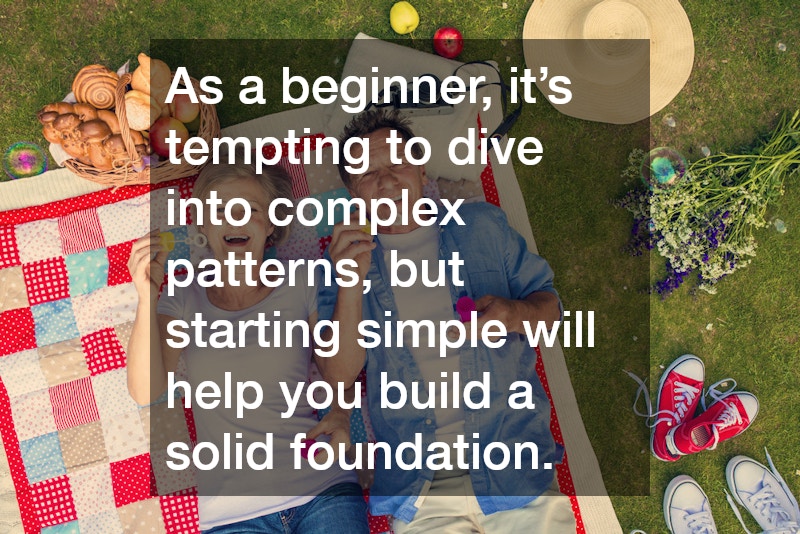

Quilting is a timeless craft that combines creativity, precision, and patience. For beginners, the thought of starting a quilt may feel overwhelming, but with the right guidance and a few key tips, you can dive into this rewarding hobby with confidence. Whether you’re looking to create a beautiful handmade gift or a cozy quilt for yourself, understanding the basics and investing in the right tools will set you up for success. In this guide, we’ll cover essential quilting tips and the importance of having the best machine quilting tools to make your journey smoother.
1. Start with Simple Patterns
As a beginner, it’s tempting to dive into complex patterns, but starting simple will help you build a solid foundation. Choose beginner-friendly quilting patterns, such as straight-line patchwork or simple geometric designs like squares or rectangles.
These patterns are easier to cut, piece, and sew, allowing you to focus on mastering your basic quilting techniques before moving on to more complicated designs.
As you gain confidence and skills, you can start experimenting with more intricate patterns and designs. In the beginning, keep it simple and enjoy the learning process without feeling overwhelmed by too many steps.
2. Invest in the Right Machine Quilting Tools
Having the right machine quilting tools is crucial for both the quality of your work and the ease with which you complete your project. Beginners often underestimate how much difference good tools can make. Here are a few essential quilting tools you’ll need:
Rotary Cutter: This tool helps you cut fabric quickly and accurately. It’s much faster and more precise than using scissors, especially for cutting multiple layers of fabric.
Cutting Mat: A self-healing cutting mat is essential to protect your surfaces and keep your rotary cutter blades sharp. It also ensures you make straight cuts every time.
Quilting Ruler: A clear quilting ruler helps you measure and cut fabric pieces accurately. Look for one with easy-to-read measurements and non-slip grips to prevent shifting while cutting.
Sewing Machine: For machine quilting, a reliable sewing machine is your best friend. Make sure it has the ability to handle multiple layers of fabric and comes with basic quilting features like an even-feed or walking foot for smooth stitching.
Investing in quality machine quilting tools not only improves your efficiency but also helps you achieve a more professional finish on your quilts.
3. Choose Quality Fabric
When it comes to quilting, the fabric you choose can make all the difference. As a beginner, you might be tempted to use cheaper fabrics, but investing in high-quality quilting cotton will make your sewing experience much easier. Quality fabric is easier to cut, piece, and sew, and it will last longer than lower-grade materials.
If you’re unsure of which fabrics to choose, start by visiting a local quilting store where you can touch and feel the fabric in person. Look for fabrics with tight weaves and consistent colors. Pre-cut fabric bundles, often called “fat quarters,” are also a great option for beginners as they are already measured and cut, saving you time.
4. Master Your Cutting Techniques
Accurate cutting is one of the most important aspects of quilting. If your pieces are not cut correctly, your quilt may not come together as neatly as you would like. Use your rotary cutter, cutting mat, and quilting ruler to measure and cut your fabric with precision.
Take your time and make sure your cuts are clean and straight. If you’re using a pattern, follow the cutting instructions carefully to avoid wasting fabric. Accurate cutting will make the piecing process much smoother and ensure that your quilt blocks fit together perfectly.
5. Practice Consistent Seam Allowances
In quilting, having consistent seam allowances is crucial. Most quilting patterns use a ¼-inch seam allowance, which is smaller than the standard seam allowance for general sewing projects. Using a ¼-inch foot on your sewing machine can help you maintain this exact measurement while sewing your quilt pieces together.
Consistency in your seam allowances ensures that your quilt blocks fit together properly and align perfectly when you’re assembling the quilt top. Practicing sewing with a consistent seam will make a big difference in the overall appearance of your quilt.
6. Press, Don’t Iron
Pressing your fabric and seams is an important step in quilting, but be careful not to confuse pressing with ironing. When quilting, you should press your fabric gently, lifting the iron and placing it down without moving it back and forth. This helps to flatten the seams without distorting the fabric or pulling the seams out of shape.
Press your seams to one side, usually toward the darker fabric, to avoid shadows on the quilt top. Regularly pressing your seams during the piecing process will help keep your fabric flat and make assembling the quilt easier.
.


